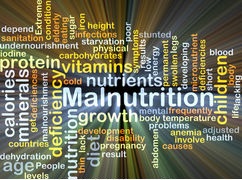Bridging the malnutrition gap, the Bemetara way.
Relevance:
- GS Paper-3: Food security.
- Tags: #upsc #foodsecurity #gspaper3 #economicdevelopment.
Why in the news?
As per a recent report nutrition security is still a distant dream. People often lack knowledge of proper eating and feeding practices. Myths around food and increased accessibility to highly processed food have compounded the problem.
Lessons from Bemetara
- Bemetara in Chhattisgarh is a puzzling district in the context of its malnutrition status. Situated in the fertile plains of Chhattisgarh, it is unaffected by Naxalite activities and is agriculturally rich. Its inhabitants are also relatively affluent.
- However, the number of Severe Acute Malnutritioned (SAM) children there was as high as 3,299 in December 2022. This figure bears a striking resemblance to the situation in tribal-dominated and Naxal-affected districts such as Bastar.
- It points to the lack of proper knowledge about feeding practices. The problem is not about access but improper knowledge around when, how and what to eat. This is why nutrition counselling combined with robust monitoring was chosen as the modus operandi for this area.
Potth Laika Abhiyaan
- Potth Laika Abhiyaan — which means “Healthy Child Mission” (literal translation) in the Chhattisgarhi language — is a nutrition counselling programme that is being implemented in 72 of the most affected AWCs in the Bemetara sub-division of Bemetara district.
- It has the technical support of UNICEF, Chhattisgarh. Here, ground-level staff from the Health and Women and Child Development departments have been well trained on how to provide nutrition counselling in the region.
- Every Friday, the parents of the targeted SAM and Medium Acute Malnutritioned (MAM) children are summoned and counselled.
- They are taught in simple Chhattisgarhi language the importance and the constituents of “Tiranga Bhojan” (a balanced diet), the need to wash hands regularly and many other tips in order to lead a healthy lifestyle. Many harmful dietary myths and superstitions are dispelled as well.
- The progress of the targeted children is being monitored. Local leaders such as sarpanchs, panchayat sachivs and religious heads have also participated in the counselling sessions. Door-to-door visits to the houses of targeted children are also done to monitor their progress.
Significant Data
- As a result of the simple mantra of nutrition counselling along with regular monitoring and evaluation, as many as 53.77% of targeted children were brought out of malnutrition by the Potth Laika Abhiyaan, in a span of nine months, i.e., from December 2022 to July, 2023 — 599 out of 1,114 children.
Further, 61.5% of MAM children and 14.67% of SAM children have been brought out of malnutrition. - When comparing this with a random control group of 20 AWCs where this mission was not being implemented, only 30.6% children were taken out of malnutrition. That is, 33.8% MAM children and zero SAM children were taken out of malnutrition. This shows a total increase of 23% over and above the control group, which is very encouraging.
- Further, while providing meals requires elaborate budgeting and the risk of leakages, this mission is a zero cost one, requiring no more than a few training sessions and regular monitoring. Thus, it has shown itself to be cost effective as well.
Conclusion
- From the experiences highlighted, there is no doubt that this model needs to be replicated on a larger scale across districts and States.
- Providing food to the poor needs to be supported with nutrition counselling and monitoring in order to truly accelerate the eradication of malnutrition.
- It is only when this simple but impactful strategy of nutrition counselling is followed both in letter and spirit, that India can move closer towards achievement.
- In fact, according to the POSHAN Abhiyaan Progress Report, 2018, “A focused and coherent SBCC Action Plan is essential to take the work of POSHAN Abhiyaan forward.”
- Thus, there is a need for field staff to be properly trained in nutritional counselling and there is a need for it to be implemented, mandatorily and uniformly, by States.
Way Forward
- It is important to note that “Jan Andolan”, or social and behavior change communication (SBCC), has been a facet of POSHAN Abhiyaan.
- This includes bicycle rallies, plantation of Poshan Vatikas, celebration of Poshan Maah, Poshan Pakhwaras and Godh Bharaais.
- Different States have held various awareness programmes under the SBCC. However, the concept of nutrition counselling has yet to be properly institutionalized and implemented uniformly across States.
- People often lack knowledge of proper eating and feeding practices. Nutrition counselling can potentially be the answer to this problem.
Source: The Hindu
Mains Question
Discuss the issue of food security and elaborate the steps need to be taken to ensure food security.




